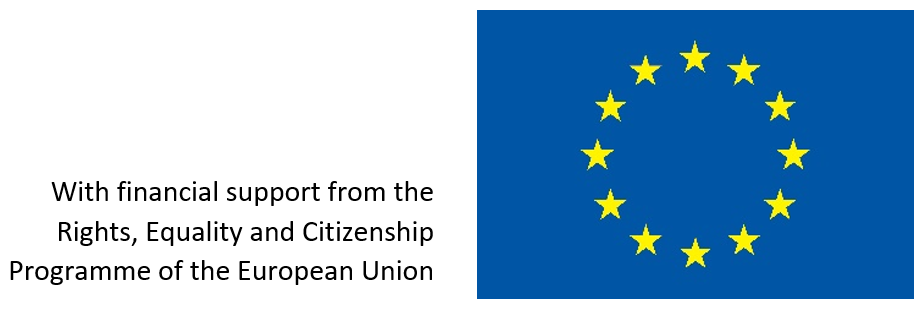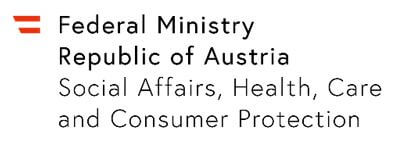Stop the Abuse and Start the Action
The campaign was produced as a result of the Civil Courage Training attended by the WAVE Youth Ambassadors this July 2022 in Vienna. The activity was funded by Magistrat der Stadt Wien, MA 57 – Advancement of women and coordination of women’s issues.
We live in a world witnessing a rise in extremism and hate crimes, with COVID-19 having exacerbated the already pressing issues of racism, xenophobia, and also sexism and gender-based violence. Democracies are being challenged, reproductive rights are being reversed, and cyberbullying and online sexual abuse are shaping the lives of youth. Having high moral values and aspiring for a world based on fair opportunities, equality and non-violence are not enough. We need civil courage to tackle structural injustices and challenge the power imbalances which are defining today’s socio-political landscape.
Civil courage is about social justice, fairness, sharing, and protecting others – It is to not look away, to not go along and to not stay silent when witnessing injustices. Civil courage requires standing up for another person. It is ‘the decision to support the victim of unethical behaviour despite expected negative consequences for the actor’ (Galdi et al. 2017: 338). Civil courage is about social change and fighting oppression.
As Martin Luther King, Jr. said:
“In the end, we will remember not the words of our enemies, but the silence of our friends.”
(cited in Williams et al. 2022:3)
Even if civil courage is a quality many aspire to exert, only a few of us are proactive in unjust situations. Many of us have, for example, witnessed catcalling, racist remarks on public transportation, xenophobic comments on social media, or sexual harassment at the workplace; however, most of us stay silent. Many of us are inactive out of fear, thinking it’s a personal matter or simply hoping that somebody else will intervene. Here are some facts and tricks about how to change that.
First: NOTICING. You must be aware that uncivil and immoral behaviours are happening to act. Even though this step seems evident, it is often difficult not to be distracted. It is even more difficult to witness injustices that one is personally not being confronted with because of differing backgrounds, ethnicity, gender identity, or disabilities. Thus, noticing requires us to constantly reflect on our own upbringing, misconceptions, prejudices, privileges, and disadvantages.
Second: INTERPRETING the situation as an emergency and feeling responsible for providing assistance. In this step, it is crucial to keep in mind that the more bystanders there are, the fewer people feel the urge to intervene!
Third: DECIDING HOW TO SUPPORT. Take the time to look around you to see how your surroundings can positively contribute to the situation and to evaluate your own resources. Try to get supporters and other people involved. The bigger the group, the more powerful and safer it will be!
And the final step: INTERVENING. Intervening is the most challenging step. However, even small interventions could save lives.
Here are some recommendations on how to intervene depending on the situation:
- Formulate your feelings, needs, and request without criticizing or blaming.
For e.g.: ‘it makes me feel uncomfortable. Your comment is rooted in ignorance (racist/sexist ideas). I want you to know that. Please stop.’
- Don’t be aggressive or adversarial.
It will only escalate the situation.
- Repeat what the person said.
Sometimes it is enough to make people re-evaluate their statements as not every aggression is intentional.
- Reduce discussion as much as possible.
When the aggressor shows a high level of aggressivity, discussions are useless.
- Control over your body and voice.
Stand straight, don’t lose eye contact, and don’t be distracted.
- Surprise the aggressor.
Ask questions like: ‘What time is it? Do you know where the toilets are?’
- Pretend you know the victim.
Aggressors often look for easy situations to exert dominance. One more person being close to the victim might dissuade him/her/them from continuing.
- Enforce social norms while helping the victim.
Getting the attention of the aggressor can give the victim the possibility to escape while giving her/them/him strength and support.
- Stay safe!
If the situation is too risky (too many or too violent aggressors), don’t put yourself in danger! Instead, make yourself available as a witness and carefully memorize the perpetrator’s characteristics.
- Get supporters around you and call for help.
Look around you and activate the group to feel responsible. Try to be precise to have a higher success rate. For e.g.: ‘You with the red cap, come and help me. You with the blue T-shirt, call the police!’
- Film the aggression if you don’t have the capacities to actively intervene.
Filming the aggression can intimidate the perpetrator into stopping the action and can be valuable evidence for further proceedings.
- Report.
Reporting is crucial to hold the aggressors accountable and push for change. Whether in public transportation, at the workplace or at university, report misbehaviour. Reporting is also key regarding cyberbullying and online offenses, as responses can sometimes give the wrong attention.
Act now!
Raising awareness and prevention comes before and after the immediate threat!
Being proactive in public is not easy, and your journey of showing civil courage will start with some discomfort. But civil courage is crucial to fight structural oppression. Give yourself time and space as it is a long process. With experience intervening will get easier. High self-esteem is also central to civil courage. Learn to love yourself, believe in yourself and foster your prosocial values to bring about positive social change. And don’t forget: While it might seem difficult at first, together we are stronger, so let’s stand up and fight for every space to be safe!
Sources
Anderson, Shona. 2011. No More Bystanders = No More Bullies Activating Action in Educational Professionals. Thousand Oaks, Calif: Corwin.
“Eingreifen.de – Zivilcourage Im Alltag.” Accessed July 25, 2022. http://www.eingreifen.de/.
Galdi, Silvia, Maas, Anne, and Cadinu, Mara. 2017. “Defending the Victim of Sexual Harassment: The Influence of Civil Courage and Media Exposure.” Psychology of Women Quarterly 41 (3):338-351.
Latane, Bibb, and Darley., M. John 1970. The Unresponsive Bystander: Why Doesn’t He Help? Appleton-Century Crofts.
Moisuc, Alexandrina, Brauer, Markus, Fonseca, Anabel, Chaurand, Nadine and Greitemeyer, Tobias. 2018. “Individual Differences in Social Control: Who ‘Speaks up’ When Witnessing Uncivil, Discriminatory, and Immoral Behaviours?” British Journal of Social Psychology 57 (3): 524–46.
Willems, Jurgen. 2021. “Learning Civil Courage: A Citizens’ Perspective.” Educational Researcher 50 (9): 679–81.
Williams, Monnica T., Faber, Sonya, Nepton, Arghavan, and Ching, Terence H. W. 2022. “Racial Justice Allyship Requires Civil Courage: A Behavioral Prescription for Moral Growth and Change.” American Psychologist, No Pagination Specified-No Pagination Specified.
Written by Charlotte Cramer






